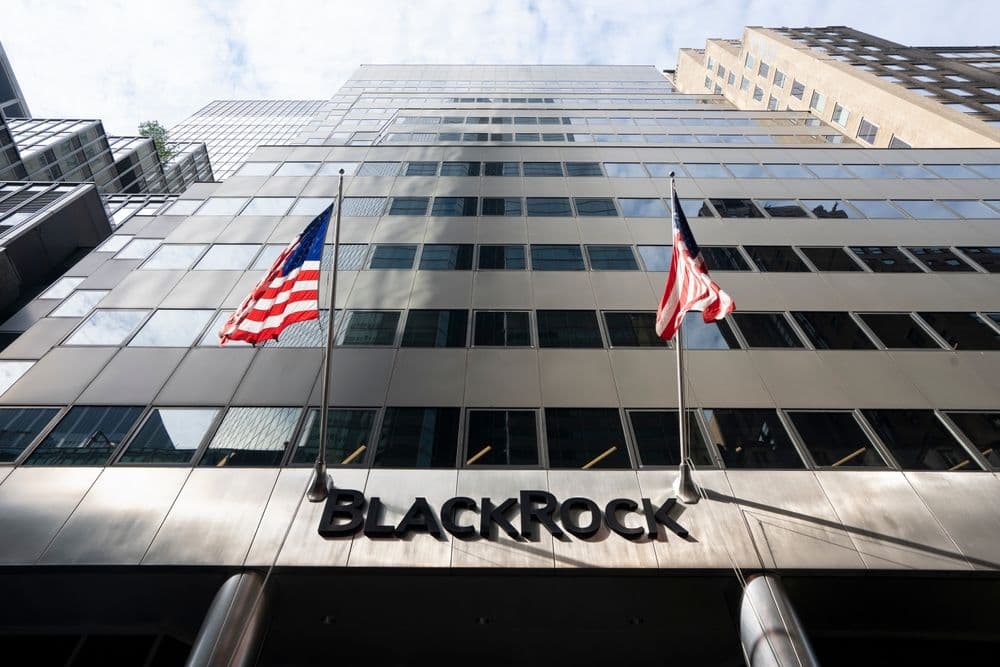At the Bitcoin 2025 conference in Nashville, Robert Mitchnick, Head of Digital Assets at BlackRock, outlined a measured but unmistakable shift in how the world’s largest asset manager views Bitcoin.
In a keynote presentation, Mitchnick described Bitcoin’s growing role as a strategic allocation in institutional portfolios - one that could eventually rival or surpass gold in utility and upside.
The comments, delivered on the Nakamoto Stage, emphasized BlackRock’s expanding investment products and signaled that the firm's approach to Bitcoin is now deeply integrated across advisory platforms, model portfolios, and global wealth channels.
Crucially, Mitchnick clarified that this shift isn’t a short-term reaction to market hype but a product of years-long research and policy development inside the firm.
From Niche Exposure to Institutional Allocation
While BlackRock’s iShares Bitcoin Trust (IBIT) has already gained significant traction in U.S. markets, the firm recently introduced a similar product in Europe, indicating that Bitcoin exposure is becoming part of a broader, global investment strategy.
Mitchnick noted that a substantial portion of IBIT’s demand now comes from non-U.S. wealth channels, particularly in Asia, suggesting that institutional appetite for Bitcoin is far from confined to American retail enthusiasm.
A notable inflection point came in February 2025, when Bitcoin was formally added to one of BlackRock’s internal model portfolios - tools widely used by financial advisors to construct client portfolios. Mitchnick revealed that the allocation, typically in the 1% to 2% range, is now live across platforms, enabling passive exposure to Bitcoin without requiring individual client requests.
This structural inclusion may represent one of the most significant forms of indirect adoption, as wealth managers are empowered to offer BTC allocations as default, rather than exception.
Beyond “Tech Stock” Comparisons
Mitchnick addressed a persistent critique of Bitcoin - that it behaves like a speculative technology stock - by pointing to historical data showing its relatively low long-term correlation with equities. While acknowledging that short-term volatility is often driven by leveraged retail activity,
he argued that institutional investors increasingly view Bitcoin through a different lens: not as a growth stock, but as a strategic asset class.
Citing examples of Bitcoin rebounding strongly after macro-driven selloffs, Mitchnick suggested that volatility often masks accumulation by long-term holders. “Think back to August 5th,” he said, referencing a market dip that saw Bitcoin drop sharply. “It had nothing to do with Bitcoin fundamentally… and it doubled over the next four months.”
This pattern, he argued, supports a narrative that Bitcoin is less of a “risk-on” asset and more of a monetary hedge - one that may be especially useful in a world of fiscal uncertainty and geopolitical instability.
The Bitcoin-Gold Comparison
Mitchnick’s most provocative comments came when comparing Bitcoin directly to gold. He declined to frame the relationship as zero-sum, instead suggesting that both assets serve similar roles as fixed-supply, decentralized hedges. But he was clear in stating that Bitcoin may ultimately offer greater upside with less downside due to its digital-native structure.
Where gold offers price stability and centuries of historical precedent, Bitcoin offers rapid settlement, low-cost transferability, and ease of custody- qualities that institutional investors are beginning to prioritize.
“Bitcoin is digitally native, efficient to store, and can be transferred anywhere in near real time at near-zero cost,” he noted. “It has much higher upside than gold - and lower downside.”
Despite this, Mitchnick criticized the broader financial media and research ecosystem for underrepresenting Bitcoin’s long-term value proposition. He pointed out that mainstream narratives continue to tie BTC’s performance to macroeconomic headlines like tariffs or interest rate shifts - linkages that don’t match Bitcoin’s underlying fundamentals. “Bitcoin’s never heard of tariffs,” he said. “Doesn’t know what they are.”
Caution on Broader Crypto ETFs
Pressed on whether BlackRock would consider expanding its crypto ETF products beyond Bitcoin and Ethereum, Mitchnick drew a sharp boundary. “Bitcoin is in a category of one,” he said. “The rest of crypto competes in different lanes.”
While Ethereum might have utility as a decentralized application platform, he said, most other digital assets resemble venture-stage technologies or early-stage software equities, and shouldn’t be compared with Bitcoin’s emerging role as a macro hedge.
This view aligns with BlackRock’s apparent decision to keep IBIT narrowly focused. Rather than diversifying into a basket of tokens or experimenting with thematic crypto ETFs, the firm appears intent on anchoring institutional crypto exposure around BTC as a foundational asset.
Mitchnick also touched on U.S. regulatory momentum, particularly the recent bipartisan engagement around stablecoin oversight and crypto market structure. While careful not to predict outcomes, he called the legislative interest a positive step toward long-term clarity. “It’s just a great and encouraging thing that there is such momentum,” he said.
BlackRock’s participation in regulatory conversations suggests that institutional actors may increasingly shape the contours of future policy - especially around ETFs, custody, and disclosure standards.
Clothing thoughts
The signal from BlackRock is clear: Bitcoin is no longer viewed merely as a fringe or experimental asset. Its addition to model portfolios, rapid ETF uptake, and positioning as a gold alternative all point toward institutional normalization.
While volatility and political uncertainty remain, the trajectory seems increasingly stable: Bitcoin is becoming part of the fabric of global portfolio construction.
But the framing matters. Rather than elevating Bitcoin through marketing campaigns or social media evangelism, asset managers like BlackRock are integrating it quietly - through allocation models, default portfolio exposures, and passive investment products.
In that process, Bitcoin may be shedding its speculative image in favor of something more durable: a permanent seat at the table of modern finance.

